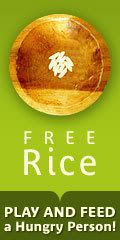
the girls on the grounds of Monticello


We then entered the guest bedroom that was named "Mr. Madison's Room", as James and Dolly Madison were frequent visitors at Monticello.
Jefferson's "Sanctum Sanctorium" consisted of four connected rooms: his Bed Chamber, Cabinet, Greenhouse, and Book Room. These rooms were rarely entered by others. His habit was to rise at dawn, or "as soon as he can see the hands of his clock." His bed chamber is really interesting. His bed sits in an alcove that connects two rooms. If he gets up on one side of the bed he is in the Cabinet, the other side he is in his bedroom. His Cabinet is where he wrote a lot of his letters. We also saw a lot of Jefferson's meteorologic instruments and some of his inventions. (even though he is only credited for one invention he continually improved upon others' inventions to make them more efficient)

We also toured the grounds of Monticello. We saw where his gardens were, as well as his flower beds and fishing pond on the west side. We walked both the North and South terraces that connected to the North and South Pavilions. The South Pavilion is the oldest building at Monticello and is where Jefferson and his wife lived during the initial construction of Monticello. Their first child was born there also.

Under the house there lies a passageway from north to south in the middle of the cellar. We saw the ice house, privies, the ware room, wine cellar, and three other cellars. Under the north terrace we saw the stables and feed room. Under the south terrace we saw the kitchen, cook's room, smokehouse, and dairy.

The kitchen was completed in 1809. It was outfitted with French copper cookware and up-to-date gadgets such as a macaroni machine and an ice cream freezer.

The ware room was kept locked and housed some of Monticello's most valuable stores, such as, anchovies, almonds, pickles, sugar, chocolate, mustard, cheese, spices, olive oil, rice, beef tongues, and coffee.
The wine room housed imported wines from France, Germany, Hungary, Italy, and Portugal. Dumbwaiters lifted wine bottles directly from the wine room to the dining room above.
Three cellars were used for making and bottling beer and cider, as well as storing fat, hard soap, tallow, rum, and pipes of wine.
The ice house was used to preserve butter and fresh meat. Ice was hauled from the Rivanna River to the ice house by wagon. Jefferson noted that some years the ice lasted until October!
There was also an archeology exhibit in the cellar that talked about how artifacts were found and pieced together at Monticello.



On Thursday, May 24th we visited the home of Thomas Jefferson! It was really amazing to see the home he designed, and even more astonishing to learn that the material to build the house were all made on the site...including the bricks and nails!
north side of Monticello

We took a guided tour of inside his house but no photography was allowed. However if you would like to take a virtual tour you can take one here: http://www.monticello.org/house/index.html
Monticello, Jefferson's 5,000 acre plantation near Charlottesville, Virginia, in Italian means "little mountain."
We entered the house through the East Portico.

We first entered the double-storied Entrance Hall where Jefferson created a museum. Exhibits included hand drawn maps, European art, bones, horns, and skins of extinct and living North American animals, and Native American objects given by western tribes to Lewis and Clark. One of his most prized specimens were the thigh, jawbone, and tusk of a mastodon found at Big Bone Lick, Kentucky. Another interesting item was his Great Clock that he designed. This clock uses cannonball-like weights to drive the seven day calender clock.
Next we entered the Parlor, which was the principal social space for family and guests. Here they gathered to play games, play and listen to music, read, or take tea. Weddings and christenings also took place in the parlor. Jefferson also used the parlor as an opportunity to educate his family and friends. He understood that the future of the United States depended upon the ability of its people to make informed decisions. Wanting to "improve the taste of his countrymen", Jefferson exhibited fifty-seven works of art here. The walls were crowded with thirty-five portraits of men who had shaped Jefferson's values as well as American and world history. Most important were "the three greatest men that have ever lived"- John Locke, Isaac Newton, and Francis Bacon. We also saw portraits of George Washington, Benjamin Franklin, the Marquis de Lafayette, Columbus, Magellan, Cortez, Raleigh, Vespucci, John Adams, Madison, David Rittenhouse, Thomas Paine, and others.
Next we entered the Dining Room and Tea Room where family members and guests met for two meals each day, breakfast and dinner. The meals were described as being a mixture of French and Virginian cuisine. Because the dining room in located on the cold north side of the house, he installed a window with triple-hung sash that was double-glazed to conserve heat. Two dumbwaiters were installed on either side of the fireplace to receive bottles of wine from the wine cellar below.
We then entered the guest bedroom that was named "Mr. Madison's Room", as James and Dolly Madison were frequent visitors at Monticello.
After Jefferson's retirement, his daughter, Martha's family moved to Monticello. The Family Sitting Room acted as the "school room" to their children, as well as an office for Martha to manage the household and dependencies. It is worth noting that Thomas Jefferson himself was homeschooled!
Jefferson's "Sanctum Sanctorium" consisted of four connected rooms: his Bed Chamber, Cabinet, Greenhouse, and Book Room. These rooms were rarely entered by others. His habit was to rise at dawn, or "as soon as he can see the hands of his clock." His bed chamber is really interesting. His bed sits in an alcove that connects two rooms. If he gets up on one side of the bed he is in the Cabinet, the other side he is in his bedroom. His Cabinet is where he wrote a lot of his letters. We also saw a lot of Jefferson's meteorologic instruments and some of his inventions. (even though he is only credited for one invention he continually improved upon others' inventions to make them more efficient)
the girls on the west piazza

We also toured the grounds of Monticello. We saw where his gardens were, as well as his flower beds and fishing pond on the west side. We walked both the North and South terraces that connected to the North and South Pavilions. The South Pavilion is the oldest building at Monticello and is where Jefferson and his wife lived during the initial construction of Monticello. Their first child was born there also.
south side of Monticello

Under the house there lies a passageway from north to south in the middle of the cellar. We saw the ice house, privies, the ware room, wine cellar, and three other cellars. Under the north terrace we saw the stables and feed room. Under the south terrace we saw the kitchen, cook's room, smokehouse, and dairy.
the girls in the stables

The kitchen was completed in 1809. It was outfitted with French copper cookware and up-to-date gadgets such as a macaroni machine and an ice cream freezer.
kitchen

The ware room was kept locked and housed some of Monticello's most valuable stores, such as, anchovies, almonds, pickles, sugar, chocolate, mustard, cheese, spices, olive oil, rice, beef tongues, and coffee.
The wine room housed imported wines from France, Germany, Hungary, Italy, and Portugal. Dumbwaiters lifted wine bottles directly from the wine room to the dining room above.
Three cellars were used for making and bottling beer and cider, as well as storing fat, hard soap, tallow, rum, and pipes of wine.
The ice house was used to preserve butter and fresh meat. Ice was hauled from the Rivanna River to the ice house by wagon. Jefferson noted that some years the ice lasted until October!
There was also an archeology exhibit in the cellar that talked about how artifacts were found and pieced together at Monticello.

vegetable gardens

Lastly, we visited the burial ground. Jefferson left precise instructions as to what should be inscribed on his tombstone, though his family changed it a little. It reads:
HERE WAS BURIED
THOMAS JEFFERSON
AUTHOR OF THE
DECLARATION
OF
AMERICAN INDEPENDENCE
OF THE STATUTE OF VIRGINIA FOR RELIGIOUS FREEDOM
AND FATHER OF THE
UNIVERSITY OF VIRGINIA

He purposefully left out a lot of his achievements, including President of the United States. He wanted to be remembered for things that he gave to people, and not for what people gave to him, which is how he felt about his presidency.
I was surprised to see that the burial ground is still being used as a burial place. There were tombstones dated as recently as the late 1990s.
We had a great time at Monticello and learned a lot about our third president.






















No comments:
Post a Comment